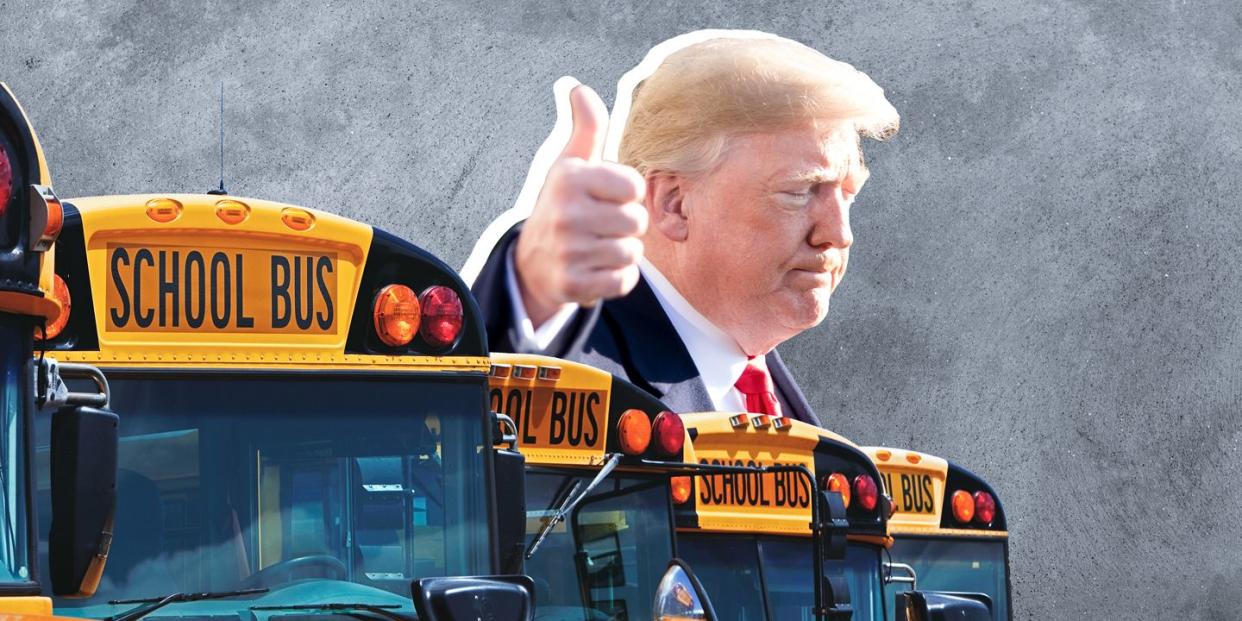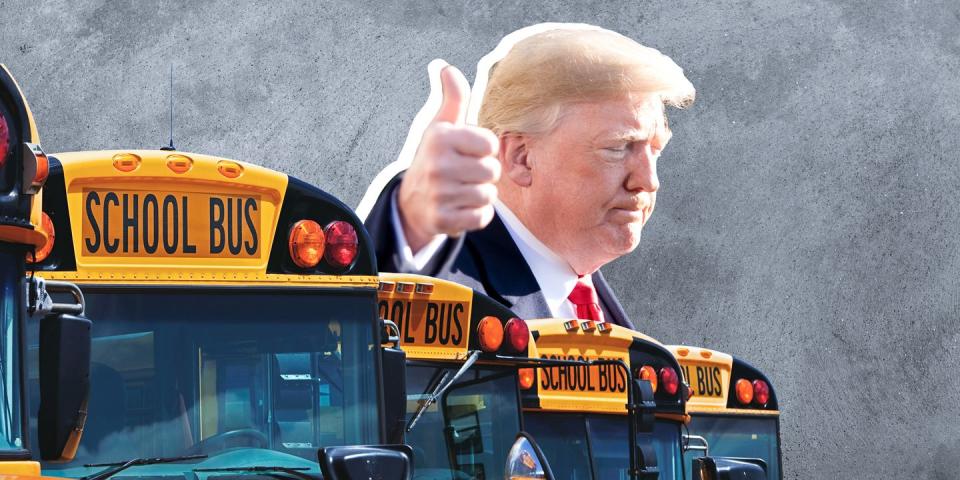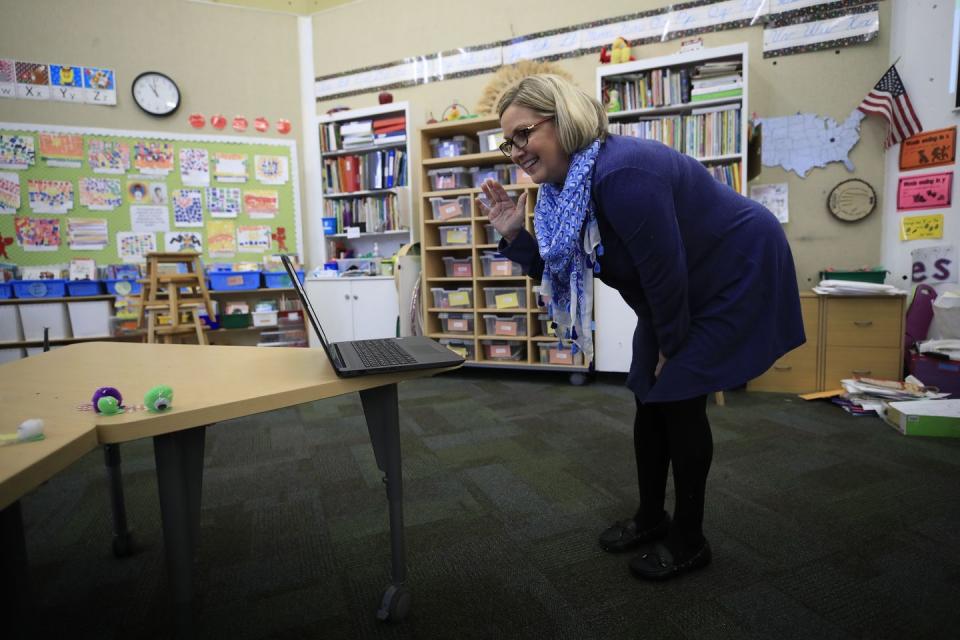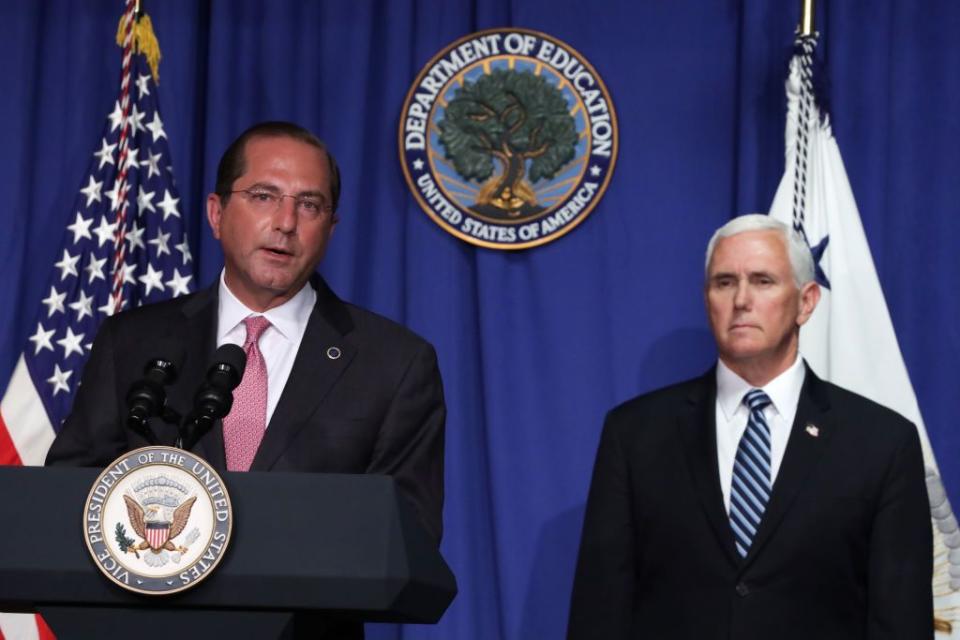How Many Sick Children and Teachers Are Worth It? What About Dead Ones?


Let’s face it: We’re fucked.
This week, the president and vice president, the First Lady, the education secretary, Florida governor Ron DeSantis, and several Fox News hosts called on America’s schools to fully reopen next month. It reminded me of February 25, the day the White House put out a singular message: Coronavirus was "under control." President Trump and his advisors telling everyone not to panic drove me to panic-buy six bottles of hand sanitizer and a giant pack of toilet paper, and pay close attention to COVID-19 case numbers. Three million cases and nearly 130,000 bodies later, it's clear it wasn't contained. The talk about reopening schools has given me this bad feeling again, except running out to CVS to buy six more bottles of hand sanitizer won’t help assuage my fears.
When schools closed this spring, parents got a crash course in how to manage preschool classes on Zoom and high school students hanging around the house. For most of us, it didn’t go well. The first time I missed an important meeting because I was deep in a preschool lesson about the letter B, the contradiction behind safer-at-home became obvious: You can keep your kids occupied or you can keep your job. Doing both is nearly impossible.
But impossible was briefly manageable with the implicit understanding that our leaders in government would create an infrastructure of testing, tracing, and quarantining until the virus was brought under control. Instead, the states that were spared the early onslaught of the coronavirus, and the president who didn’t give a shit about anything but his poll numbers and TV ratings, got a boner for the burger bar at Fuddruckers, and the reopening began. Four months later, we’re staring at an upward slope of new COVID cases that is already larger than March and April while our leaders are calling for schools to reopen. The only difference between when schools closed in early spring and now is that there’s more virus out there, and we know the virus spreads more easily in indoor spaces with recirculated air. Putting our children and their teachers inside buildings for the cold months is dangerous and absurd.
I want schools to open. I've got a five year old and a fifteen year old in a 900-square-foot house with only two bedrooms, and I'd love to have them literally anywhere else. And we’re among the lucky ones. Public schools don’t just teach. They provide subsidized breakfast and lunch for many of their students, plus access to counselors, community, and nurses. Figuring out how to deliver food and healthcare to these children is more important than how to stagger classes.
But it’s time to face the harsh reality that as parents we’re being asked to make an impossible choice by an administration that has made nothing but the wrong ones from the start. It bungled containing the virus early on, screwed up testing, took a hard right into liberating states once people's hair got long, and now, at the start of a giant new wave of cases, is taking the same tactic with schools that it did with everything else: deny reality.
Trump wants us to believe that America and Europe are on the same playing field. This week, he tweeted that "in Germany, Denmark, Norway, Sweden and many other countries, SCHOOLS ARE OPEN WITH NO PROBLEMS." There’s a reason for that. Those four countries have had fewer cases of COVID since the outbreak began than we’ve had in the last seven days. So yes, they get to have some school, as a treat. And not every country has reopened schools without a problem. Israel is seeing a second wave attributed partly to a rushed reopening of schools.
Trump wants us to believe that our children won’t get sick. While it’s true that a kid’s chance of catching the virus is pretty low—thank god for that—it’s a far cry from nothing. Recent reports out of Texas show 950 positive cases in 668 childcare centers, affecting both children and staff members. The Centers for Disease Control says that about two percent of confirmed cases across the U.S. are of children under 18. With three million cases in this country, that means roughly 60,000 kids have had it. While death rates for children are low, they’re also not zero, and we don’t know the long-term effects of COVID on young bodies.
But reopening schools isn’t just about risking children, it’s also about asking adults—many of whom are well within higher risk age brackets—to face exposure. It puts teachers, support staff, crossing guards, you name it, in the terrible position of either imperiling themselves by returning to work or quitting their jobs and losing their incomes. Alex Azar, the former pharmaceutical lobbyist who heads up the Department of Health and Human Services, says this won’t be a problem because there's "no reason schools have to be in any way any different" from how hospitals have operated. "Health care workers don't get infected because they take appropriate precautions,” he said. “This can work."

But it won’t work, because Azar doesn't know what the fuck he's talking about. Hundreds of health care workers have died fighting COVID and thousands more have been infected. It’s unconscionable that the head of the Department of Health and Human Services doesn't know or doesn’t care about this; it’s equally unconscionable that he thinks our nation’s teachers should approach work like they are frontline medical workers.
I love the public schools my kids attend, but I also know they can't handle a lice outbreak on a good day and are not equipped to handle COVID on a bad one. School principals and superintendents are not epidemiologists or virologists and can’t possibly be expected to make plans like they are. So who should be making decisions? To start, the CDC. So, when the vice president of the United States says, as he did this week, that "we don’t want the guidance from the CDC to be the reason schools don’t open up," what he's really saying is that the government is abandoning children, parents, and all the people who work in schools.
If 22 NBA teams and 30 MLB teams can’t keep COVID out of their reopenings despite careful, elaborate processes that reflect their need to protect the investment of millions of dollars in their players (not to mention billions of dollars in TV and advertising deals) then how in the fuck are we supposed to safely reopen 130,000 K-12 schools that always have tissues on their supplies list because they can’t afford to buy them on their own?

The answer, of course, could be an avalanche of money and planning, but the federal government isn't offering much of either to school districts around the country—in fact, they’re threatening to pull money if schools don’t fully reopen. But here's the thing: even if the money and policies came together, the best laid plans only work if we avoid large-scale community spread of a highly contagious virus for which there is no vaccine. Every reopening plan, whether it’s the NBA, Disney World, or K-12 schools, is bound to turn into a re-closing plan until we've destroyed the curve. Otherwise, there’s simply too much virus out there for anything to work. The countries the president cited as opening schools “WITH NO PROBLEMS” were able to do so because they dealt with that problem first. America hasn’t.
So, when you hear people talk about the importance of getting children back into school, even though our case numbers hit new records nearly every day, ask yourself how many sick children, teachers, cafeteria workers, janitors, and bus drivers are worth it. Now do dead ones.
And so, like countless other Americans, my family awaits the unveiling of our district’s plan for bringing kids back to school, which will be delivered over Zoom, because it’s not safe to hold a public meeting. They will likely present some level of unworkable plan that involves reduced in-person time coupled with remote learning, a maze of compromises that serves the virus and the Trump administration. Once the Zoom call ends, we’ll face decisions that are far above our expertise about what is safe, what is smart, and what is sensible. The only thing we’ll know is what we’ve felt from our leaders for months: we’re on our own to answer them.
You Might Also Like

